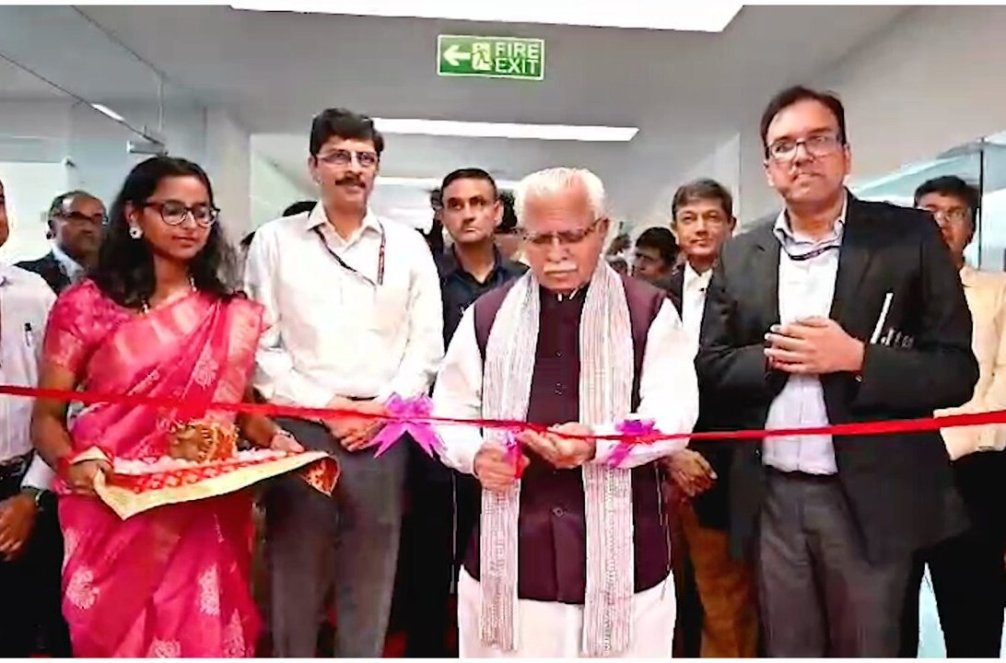Union Minister Shri Manohar Lal inaugurated the Computer Security Incident Response Team – Power (CSIRT–Power) facility today at the Northern Regional Power Committee, located at Shaheed Jeet Singh Marg, Qutab Institutional Area, New Delhi. This initiative is a significant step towards enhancing the cybersecurity of India’s power infrastructure.
Significance of CSIRT-Power
Shri Manohar Lal emphasized the importance of the CSIRT-Power facility in safeguarding one of the critical components of national infrastructure—the power sector. He highlighted that the cyber threats we face today are evolving and pose serious risks that could disrupt power services, making the sector a prime target for cyberattacks.
Key Points from the Minister’s Speech
- Proactive Measures: The CSIRT-Power is designed as a proactive response to the rising cyber threats.
- Defense Mechanism: It is not just a facility; it serves as a fortress aimed at protecting the power system from evolving cyber threats.
Cybersecurity Challenges
The power sector’s digital infrastructure is under increasing threat from adversaries with advanced capabilities. Current sub-sectoral Computer Emergency Response Teams (CERTs) often lack the necessary resources and legal mandates to effectively manage cybersecurity incidents.
Factors Contributing to Vulnerabilities
- Digital Transformation: The ongoing digital transformation in the power sector has expanded the attack surface, increasing vulnerabilities.
- Compliance Requirements: The National Cyber Security Policy, 2013, mandates the establishment of sector-specific CERTs, which underscores the necessity for a centralized approach to enhance cybersecurity.
Formation of CSIRT-Power
In alignment with the National Cyber Security Policy and as part of a 100-day initiative, the Ministry of Power, in collaboration with CERT-In, established the CSIRT-Power. This specialized team is equipped with advanced infrastructure and cutting-edge cybersecurity tools to address emerging threats.
Key Features of CSIRT-Power
- Dedicated Team: Comprising experts who will coordinate incident response and establish a strong cybersecurity framework.
- Preparedness and Resilience: The facility aims to enhance overall cybersecurity preparedness and resilience within the power sector.
Objectives of CSIRT-Power
The primary objective of CSIRT-Power is to build and enhance cybersecurity resilience in the Indian Power Sector through a structured and coordinated approach.
Associated Key Objectives
- Incident Response: Serve as the agency responsible for responding to and preventing cybersecurity incidents.
- Coordinated Response: Ensure prompt and coordinated actions against cyber threats.
- Information Sharing: Collect, analyze, and disseminate information related to power sector-specific cyber threats.
- Cybersecurity Awareness: Implement proactive measures to improve cybersecurity awareness and posture.
- Best Practices Promotion: Advocate for sector-specific best practices, Standard Operating Procedures (SOPs), and security policies.
- Expertise Provision: Offer cybersecurity expertise and support to constituent utilities.
- Capacity Building: Enhance cybersecurity through training, development of standards, and incident response drills.
- Stakeholder Cooperation: Facilitate collaboration among stakeholders to build awareness and strengthen collective cybersecurity efforts.
Multiple-Choice Questions (MCQs):
- What is the primary objective of the CSIRT-Power facility?
- A) To increase electricity production
- B) To enhance cybersecurity resilience in the Indian Power Sector
- C) To promote renewable energy sources
- D) To manage electricity distribution
- Answer: B) To enhance cybersecurity resilience in the Indian Power Sector
- Which minister inaugurated the CSIRT-Power facility?
- A) Shri Amit Shah
- B) Shri Manohar Lal
- C) Shri Nirmala Sitharaman
- D) Shri Piyush Goyal
- Answer: B) Shri Manohar Lal
- What is one of the key challenges mentioned regarding current sub-sectoral CERTs?
- A) They have too many resources.
- B) They lack the necessary legal mandate and skilled professionals.
- C) They are too focused on physical security.
- D) They have sufficient funding.
- Answer: B) They lack the necessary legal mandate and skilled professionals.
- How does the CSIRT-Power aim to respond to cyber threats?
- A) By waiting for incidents to occur
- B) By establishing a proactive approach
- C) By using outdated technologies
- D) By ignoring smaller incidents
- Answer: B) By establishing a proactive approach
- What is emphasized by the National Cyber Security Policy, 2013, regarding sectoral CERTs?
- A) They should be independent of government regulations.
- B) They should focus solely on physical threats.
- C) They need to be established for centralized coordination.
- D) They should not collaborate with other sectors.
- Answer: C) They need to be established for centralized coordination.
